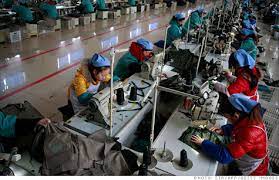China’s economic growth has slowed significantly, with the National Bureau of Statistics (NBS) reporting a year-on-year increase of +4.7% in the second quarter of 2024. This marks a decline from the +5.3% growth recorded in the first quarter and a sharp drop from the +6.3% growth observed in the same period last year. The latest figures also fall short of market expectations, which had forecast a +5.1% year-on-year growth.
Several factors have contributed to this economic slowdown, including weak household spending, ongoing issues in the real estate sector, ineffective policy easing, low consumer confidence, high local government debt, and unfavorable weather conditions.
On a quarter-on-quarter basis, the economy grew by +0.7%, a significant drop from the +1.5% growth recorded in the previous quarter, highlighting the increasing challenges facing the world’s second-largest economy.
Contributing Factors to the Slowdown
The economic downturn can be attributed to a variety of issues including weak Household Spending as Consumers have been reluctant to spend amid economic uncertainty, leading to subdued household expenditure. Also, efforts by the government to ease policies and stimulate the economy have not been fully effective. This includes high Local Government Debt limiting their ability to invest in economic growth. Poor weather has also affected agricultural output and other sectors, further dragging down economic performance.
The International Monetary Fund (IMF) has also revised its growth forecast for China, predicting a slowdown to +4.6% for the full year 2024, compared to +5.2% in 2023.
As China navigates these challenges, the global economy will be closely watching the measures implemented by the Chinese government to stabilize and rejuvenate growth.















